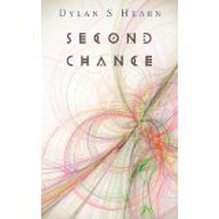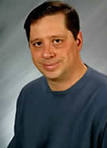Are We, Are We Ourselves? A Review of "Second Chance" by Dylan Hearn

Second Chance by Dylan S. Hearn
Publisher: Wet Feet Publishing; 4 edition (January 22, 2014)
Form Factor: Kindle
Language: English
ASIN: B00I0945TA
Available: Amazon
Goodreads link
Because seen through these eyes
We lead a double life
No one will know
So check it out steppin' out here I go
Are we, are we, are we ourselves?
Are we ourselves and do we really know?
Lyrics excerpted from "Are We Ourselves," The Fixx
For the last twenty years of so, I've been following guys like Ray Kurzweil and Bill Joy, prophets of the singularity and the melding of machine and mind. Ray Kurzweil thinks we'll be uploading our brains into boxes in the 2040s and is all over YouTube pushing the idea. He doesn't actually tell us how we're going to do it, but that's OK. That's what the imagination is for. One semi-serious concept I have read about involves removing your grey matter, slicing it up into sashimi layers, mapping your exposed neuronic net, and transferring it into a virtual mind. I can just imagine the title of a book based around that approach. " The Baklava Conspiracy. " Yuck.
The movie and TV industry has also been fascinated by the concept, but the quality of the work dedicated to the topic varies widely. Mind/machine melding inspired the writers of Star Trek to write the worst episode of the series, Spock's Brain. (Don't start. The Omega Glory was NOT worse than Spock's Brain.) On the the other hand, two Arnold Schwarzenegger movies on the topic, Total Recall and particularly The Sixth Day, were intriguing.
Regardless of how we (theoretically) get there, the mind in a machine concept is pure catnip fo Sci-Fi writers. I know because my own book, Rule-Set, uses mind uploading as a major plot point and target for dispute. I have to admit, I'm a bit skeptical about the idea. In the 80s I used to do hobbyist programming in languages such as Lisp and Turbo Prolog and watched the AI Winter descend over technology. You didn't have to be a genius coder to realize that you weren't going to build HAL 9000 with Lisp machines. By chance, I'd also read Hubert Dreyfus's What Computers Can't Do and the sequel, What Computers Still Can't Do and though at the time I thought the man lacked imagination, the fact is he nailed it. It was sad. Every geek and dope smoker went to see 2001: A Space Odyssey in 1968, and while no one could figure out the last twenty minutes of the movie, we all agreed that HAL and his friends would be around and barking out orders to us meat bags by the beginning of the next millennium.
But HAL never showed up. (But we're all still hoping that he does. And maybe stars in a better movie than the "meh" 2010 sequel.)
I've thought a great deal over the years about why we've failed to build sentient AIs and have come to the conclusion that it's not just a matter of bits, bytes and switch connection density. I also think there's a context problem. I describe the issue this way in Rule-Set .
"Let’s go back to the rose and thorns. We feel pain because our bodies have evolved in concert with those thorns to warn our brains we are experiencing physical damage. This is important because we if we lack that warning, our bodies may be destroyed. But how do you model pain and feed it to a neural net in a way that’s relevant to the software? Never mind distinguishing pain from the sensation of tickling vs tingling vs burning and so on? How does a stream of electrons moving through wires or superpositioned in a qubit ever ‘feel’ pain or find it relevant in any way? AI has spent the last forty years or so discovering that Bishop Berkeley was wrong. It’s not all about what’s in your head. It’s all about what’s in your head and what’s outside it.” Myrdin pointed to his temple, then waved at the interior of the control room. “It’s a unity.”
Thus, when the opportunity to review Second Chance by Dylan Hearn appeared, I took it. Dylan's another writer who can't stay away from mind/machine catnip and I wanted to see how he played with the meme.
Second Chance, the first book in a projected series, is set in a future, post-dystopian world where a mysterious corporation, Re-Life, has perfected the technique of transferring your mind to a computer-based brain simulation, then copying the stored entity into a clone. From a scientific standpoint, this is quite plausible when you study such efforts as the French Blue Brain project, work being done at IBM and other efforts to model our brains in software. (Though no one is quite ready to discuss the actual transfer process.)
Second Chance uses a third party narrative and shifts its viewpoint among several key characters. The main dramatis personae are Stephanie, a newly elected "Delegate" to the British legislature, Randall, an "information cleanser" whose job is to monitor the datasphere (an Internet replacement) and remove and obfuscate data, Nico, a private/public crime investigator who gets a cut of every malfeasance he solves, and the Technician, a shadowy figure connected to Re-Life's past who's constantly running about doing fishy things with body parts, clones, and very advanced computers.
The lives of these characters intersect when Jennica, a young Re-Life researcher, goes missing after discovering that there's something not quite right about how the Re-Live process works. The problem has something to do with data. Something to do with what happens to the mind when we bid adieu to one body and say hello to another. Perhaps something is not...quite...right?
And off we go.
Now, I need to get a couple of things out of the way. The first is that the first 10% of the book is a bit slow going to an American audience. Author Hearn is British and brings a Euro sensibility to the book. Said sensibility encompasses:
Predictions that the UN will run the world. Americans believe the UN is about as capable of running the world as their local PTA. Only your local PTA doesn't have members on its governing board who provide the schools under its jurisdiction with ground to air missiles that blow Canadian jetliners out of the sky. This might make after school meetings more interesting, but it still wouldn't convince Americans that the PTA should run the world.
The British parliamentary system. Americans are aware that the UK has a prime minister and a parliament. To an American, your prime minister is a president and your MP is a member of Congress. After that, no real clue. In Second Chance , the Speaker is the "Chief Placater," Members of Parliament (MPs) are now Delegates, and the Prime Minister is the "Prime Delegate." It sounds like a good cut of steak. It's too much inside cricket to no real purpose, though perhaps a British audience thought mixing it up was interesting. I side with Mr. Spock. "A difference which makes no difference is no difference" and the exercise just distances an American audience perhaps further than necessary.
Global warming. In Second Chance, global warming is the dystopia from which the world is recovering. Americans are very tired of global warming. And muy skeptical. I'm from the Bronx (New York) and ten thousand years ago the place was buried under a mile of ice. I'm in favor of global warming. In Connecticut, it's August and it feels like October. Everyone here is happy with climate change. Writers, it's time for a new dystopic future. Zombie Dinosaurs from Outer Space. Radioactive Leeches from Beneath the Earth's Crust. Mutant Atomic Algae. Move on, move on.
Another problem with Second Chance is that the post-dystopic future sometimes sounds too much like the present hot mess we all live in. For example, in this new and better tomorrow (the result of a seminal socio/political upheaval referred to in the book as "The Miracle") politicians are obsessed with polls, are constantly checking the Internet -- errr datasphere -- to read what people are saying about them, break their promises on key positions when it's in their interests to do so, take sexual advantage of their employees, and stab each other in the back with a vigor and regularity that would make Titus Andronicus proud.
And what's changed is?
OK, enough quibbling. Ignore the speed bumps at the beginning of story and you'll be rewarded. At its core, Second Chance is a twisty, fascinating story that draws you further in as its narrative unfolds. The plot links together puzzle box fashion so read carefully. One of the most intriguing concepts the author introduces is the promise of true physical immortality for the entire populus, not just the elites, who are already enjoying its benefits (but at what cost)? It's the Jehovah's Witness version of heaven, a vision of absolute eternal comfort paid for by absolute eternal control.
Just as interesting is the speculation in the novel that begins to swirl around the Re-Life process. The arguments about mind vs soul have raged since Descartes kicked off the era of modern philosophy. Advances in quantum physics have raised even further questions as the possibility of quantum teleportation, however unlikely now, looms as a physical possibility in the future. When/if we succeed in cutting the bonds between our physical bodies and the various electronic afterlives and simulated heavens waiting to debut in the future, will anything be left behind when the ghost leaves the shell?
Second Chance begins to probe these questions in the first book and promises to explore further in the sequels. I'm looking forward to reading them.
Published on August 19, 2014 08:30
No comments have been added yet.



